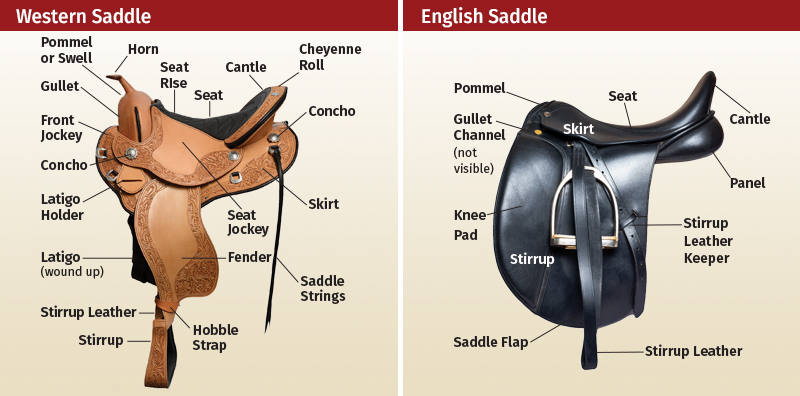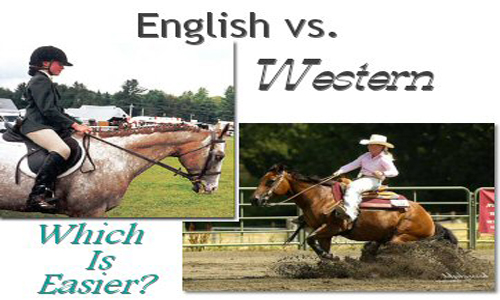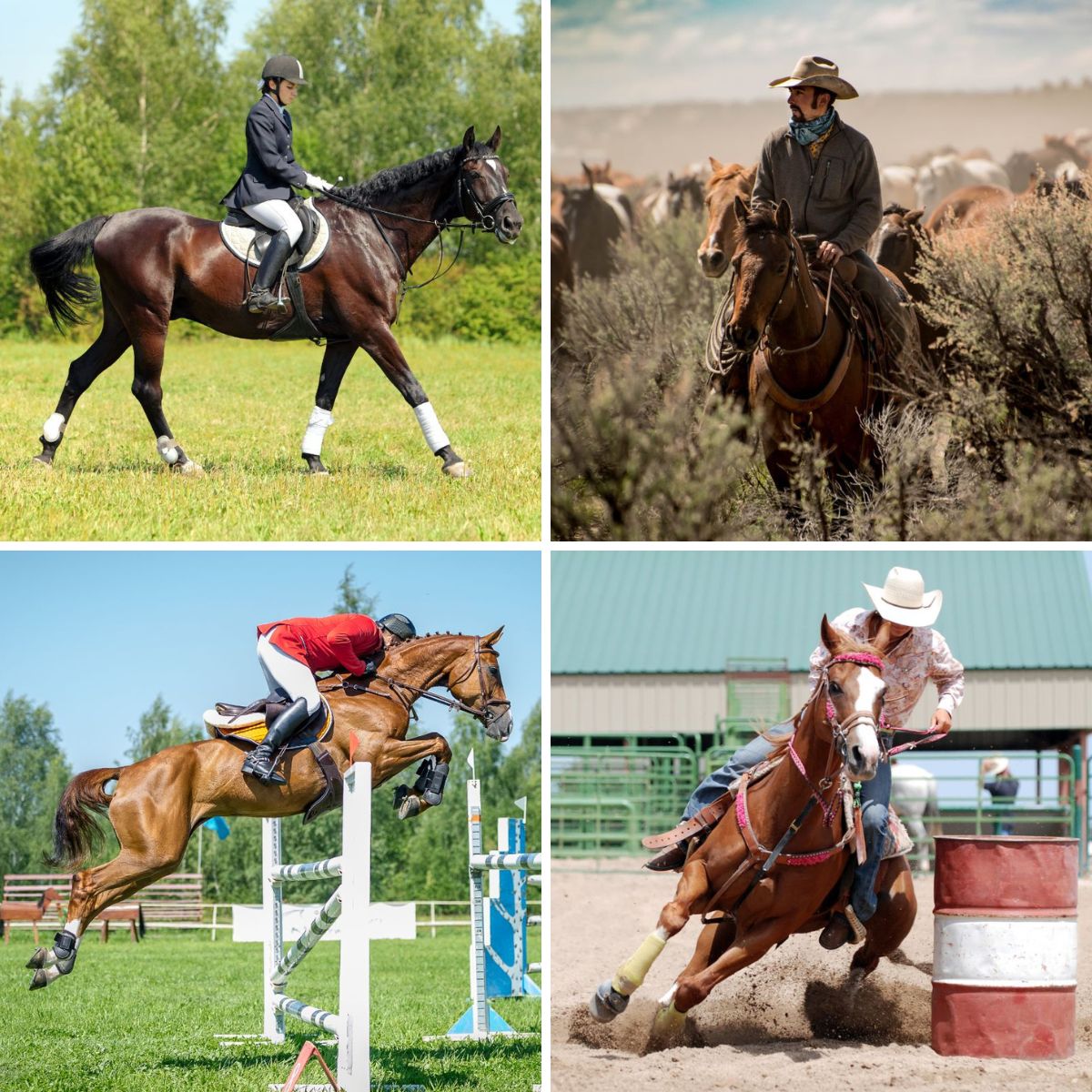English riding and Western riding differ in their equipment, techniques, and purpose. English riding emphasizes a forward seat and light contact with the horse’s mouth, while Western riding utilizes a deeper seat, longer stirrups, and heavier rein contact.
It is important to understand these distinctions to choose the most suitable style for your equestrian pursuits. In English riding, riders use a close-fitting saddle with a flat seat and knee rolls for support and balance. They typically hold shorter reins with light contact and focus on subtle aids and communication with the horse.
English riding is commonly seen in disciplines such as dressage, show jumping, and cross-country. Western riding, on the other hand, employs a saddle with a horn and a deeper seat to provide stability during activities like ranch work, trail riding, and rodeo events. Riders use longer stirrups and hold a longer rein to maintain control and guide the horse. Western riding often incorporates elements of Western pleasure, reining, and cutting. Understanding the differences between English and Western riding allows equestrians to choose the style that aligns with their goals and preferences. Whether you are interested in competitive sports or leisurely trail rides, selecting the appropriate riding style enhances both your enjoyment and connection with the horse.

Credit: www.horsejournals.com
Differences In Riding Styles
English riding and Western riding are two distinct styles that evolved in different parts of the world and have developed their own techniques and traditions over time. Understanding the differences between these styles is essential for riders to find the one that suits their goals and preferences. Let’s take a closer look at the key differences in riding styles between English and Western riding.
Seat Position
When it comes to seat position, one notable difference between English and Western riding is how riders sit in the saddle. In English riding, the rider has a relatively upright position, emphasizing a deep and close contact with the horse’s back. The rider’s legs are positioned directly underneath their body, with the heels down and toes up.
On the other hand, Western riding features a more relaxed and laid-back seat. Riders sit deeper in the saddle, leaning back slightly and focusing on balance and stability. The legs are positioned more forward, providing a wider base of support. This seat position allows the rider to absorb the movements of the horse while maintaining control and direction.
Use Of Reins
Another significant difference between English and Western riding lies in the use of reins. In English riding, riders typically hold the reins individually, with one rein in each hand. This allows for greater precision and control over the horse’s movements. The rider engages both reins, applying equal pressure when necessary to guide and communicate with the horse.
In contrast, Western riding utilizes a single rein hold. Riders hold the reins in one hand, allowing for a looser and more relaxed contact with the horse. This style of rein handling emphasizes neck reining, where the rider guides the horse by applying pressure to the side of the horse’s neck. The single rein hold in Western riding allows for simple and fluid communication between horse and rider.

Credit: www.differencebetween.net
Equipment And Tack
When it comes to riding, the equipment and tack play a crucial role in ensuring the comfort and safety of both the rider and the horse. Understanding the differences between English and Western riding in terms of the equipment used can help riders choose the right gear for their preferred style of riding. In this article, we will explore the key differences in the equipment and tack used in English and Western riding.
Saddle And Bridle
One of the major differences between English and Western riding lies in the design of the saddle and bridle. In English riding, the saddle is lightweight and has a shorter seat, allowing the rider to have a closer contact with the horse. It is designed to provide maximum mobility and freedom of movement for the horse. The bridle used in English riding typically features a snaffle bit and offers more precise control over the horse’s movements.
On the other hand, Western riding utilizes a heavier saddle with a deep seat and high pommel and cantle. This design provides more stability and support to the rider, which is particularly important when performing tasks such as roping or working cattle. The bridle used in Western riding is often a simple version of a curb bridle, which offers a direct signal to the horse through the use of a leverage bit.
Bits And Stirrups
Bits and stirrups also differ between English and Western riding. In English riding, snaffle bits are predominantly used, which work by direct pressure on the horse’s mouth without leverage. The use of balanced stirrups is also common, which help the rider to maintain a correct position and provide stability while jumping or performing intricate maneuvers.
Western riding, on the other hand, commonly utilizes curb bits, which provide pressure on the horse’s mouth through the use of leverage. This allows for more refined control over the horse’s movements, especially when working with cattle or performing tasks that require precise maneuvers. Additionally, Western riders often use wide stirrups that provide a larger base of support, promoting stability and balance when in the saddle.
In conclusion, while both English and Western riding share the same goal of horse and rider working together harmoniously, the differences in equipment and tack are significant. From the design of the saddle and bridle to the choice of bits and stirrups, each style of riding has its own unique requirements. Understanding these differences is key to selecting the right equipment for your preferred riding style.

Credit: ihearthorses.com
Frequently Asked Questions For The Difference Between English And Western Riding
Is English Riding Harder Than Western?
English and Western riding have different techniques, but one is not necessarily harder than the other. It depends on personal preference and goals.
How Do I Choose Between English And Western Riding?
Choose between English and Western riding by considering your goals, preferences, and riding style. English riding emphasizes posture, control, and jumping, while Western riding offers a more relaxed, laid-back approach. Test both styles to see which one feels more comfortable and suits your riding objectives.
Can A Western Horse Be Ridden English?
Yes, a Western horse can be ridden English. Western and English riding styles have different equipment and techniques, but a horse trained in Western riding can be transitioned to English riding with proper training and adjustment.
What Is The Difference Between English And Western Gaits?
English and Western gaits are different styles of horse riding. English gaits include the walk, trot, canter, and gallop, while Western gaits include the jog, lope, and gallop. The main difference lies in the posture of the rider, with English riders adopting a more upright position and Western riders using a relaxed and deep-seated stance.
Conclusion
To sum it up, English and Western riding styles differ in many aspects, from the equipment used to the techniques employed. English riding focuses on precision, elegance, and communication between horse and rider, while Western riding emphasizes a relaxed and Western-style attire.
Both styles offer unique experiences and challenges, allowing riders to choose what suits their preferences. So, whether you’re drawn to the grace of English riding or the ruggedness of Western riding, there’s a style out there for everyone. Happy riding!

